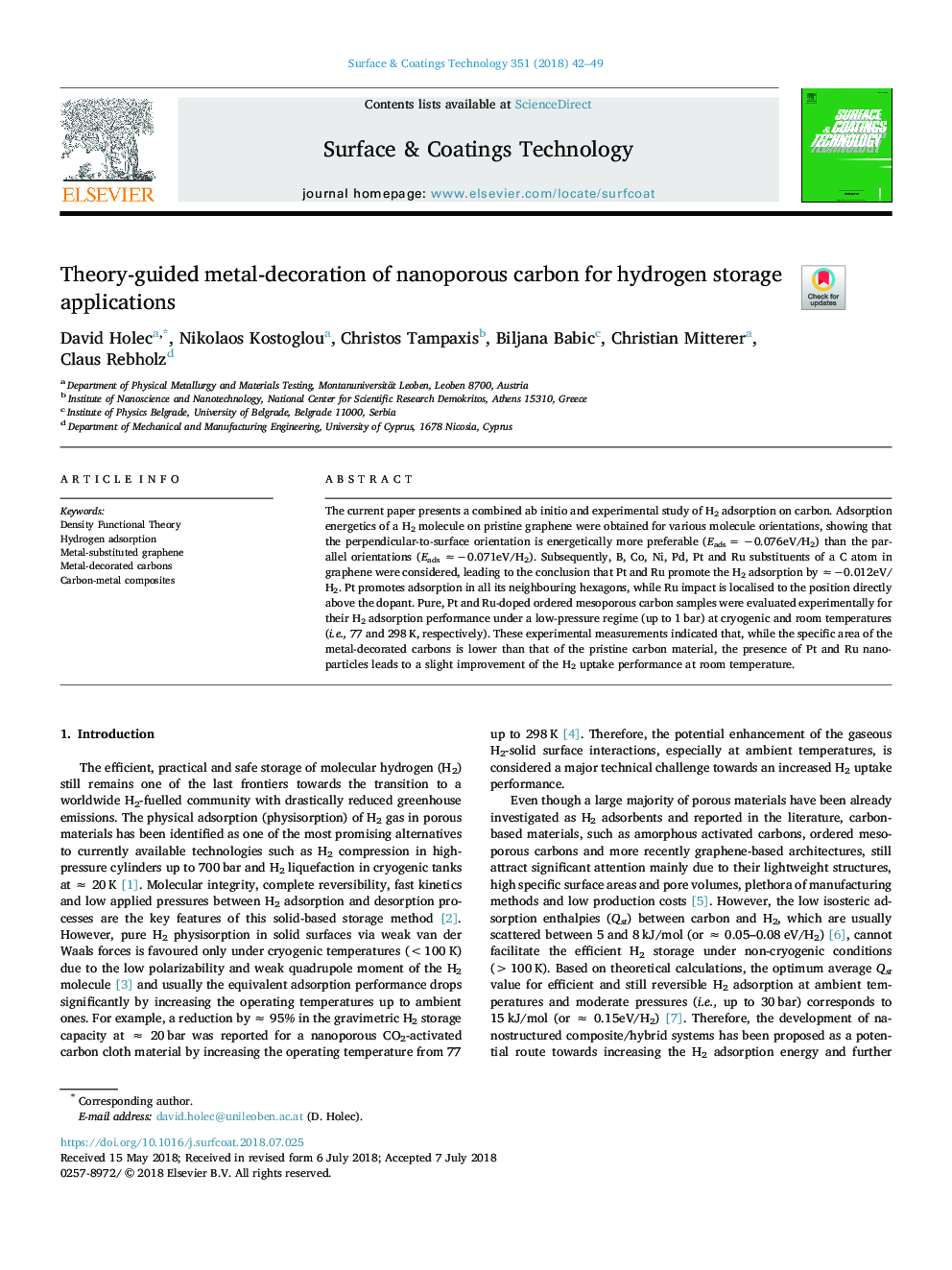| Article ID | Journal | Published Year | Pages | File Type |
|---|---|---|---|---|
| 8023207 | Surface and Coatings Technology | 2018 | 8 Pages |
Abstract
The current paper presents a combined ab initio and experimental study of H2 adsorption on carbon. Adsorption energetics of a H2 molecule on pristine graphene were obtained for various molecule orientations, showing that the perpendicular-to-surface orientation is energetically more preferable (Eadsâ¯=â¯â0.076eV/H2) than the parallel orientations (Eads ââ0.071eV/H2). Subsequently, B, Co, Ni, Pd, Pt and Ru substituents of a C atom in graphene were considered, leading to the conclusion that Pt and Ru promote the H2 adsorption by ââ0.012eV/H2. Pt promotes adsorption in all its neighbouring hexagons, while Ru impact is localised to the position directly above the dopant. Pure, Pt and Ru-doped ordered mesoporous carbon samples were evaluated experimentally for their H2 adsorption performance under a low-pressure regime (up to 1â¯bar) at cryogenic and room temperatures (i.e., 77 and 298â¯K, respectively). These experimental measurements indicated that, while the specific area of the metal-decorated carbons is lower than that of the pristine carbon material, the presence of Pt and Ru nanoparticles leads to a slight improvement of the H2 uptake performance at room temperature.
Related Topics
Physical Sciences and Engineering
Materials Science
Nanotechnology
Authors
David Holec, Nikolaos Kostoglou, Christos Tampaxis, Biljana Babic, Christian Mitterer, Claus Rebholz,
